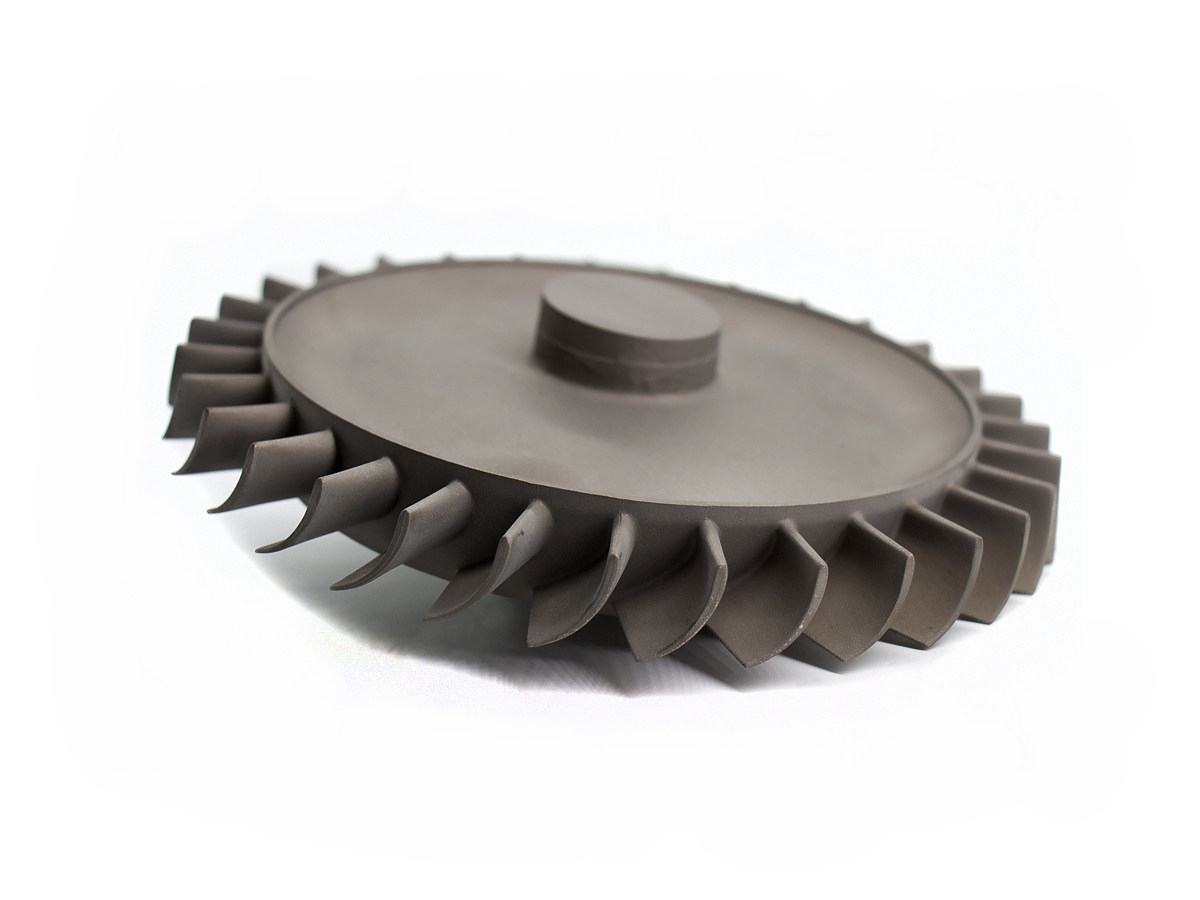Superalloys in Power Generation: CNC Machining Applications for Precision Industrial Equipment
Introduction
The power generation industry demands materials capable of withstanding extreme temperatures, high pressures, and severe operational conditions. Superalloys like Inconel 718, Hastelloy X, and Stellite 6 excel in such environments due to their outstanding thermal stability, superior corrosion resistance, and exceptional mechanical properties, making them ideal for turbine blades, combustion chambers, heat exchangers, and critical valve components.
Advanced CNC machining techniques significantly enhance the precision, reliability, and efficiency of superalloy components used in industrial power equipment. Precision machining ensures complex geometries, strict dimensional accuracy, and superior surface finishes, directly contributing to improved equipment performance, safety, and service longevity.
Superalloy Materials for Power Generation Equipment
Material Performance Comparison
Material | Tensile Strength (MPa) | Yield Strength (MPa) | Max Operating Temp (°C) | Typical Applications | Advantage |
|---|---|---|---|---|---|
1240-1450 | 1034-1207 | 700 | Gas turbine blades, rotor shafts | Excellent tensile strength, superior fatigue life | |
755-965 | 385-690 | 1204 | Combustion chambers, high-temperature ducts | Outstanding oxidation resistance, high thermal stability | |
830-1035 | 580-690 | 815 | Valve seats, wear-resistant parts | Exceptional wear resistance, corrosion resistance | |
827-1103 | 414-758 | 982 | Exhaust components, heat exchangers | Excellent corrosion resistance, strong weldability |
Material Selection Strategy
Choosing the appropriate superalloy for power generation equipment requires precise evaluation based on operating conditions and performance requirements:
Gas turbine blades, rotors, and shafts experiencing high mechanical stress and temperatures up to 700°C benefit from Inconel 718 due to its superior tensile strength (up to 1450 MPa) and excellent fatigue properties.
Combustion chambers and high-temperature ducts exposed to elevated temperatures (up to 1204°C) demand Hastelloy X for its outstanding oxidation resistance and thermal stability, ensuring reliable and consistent operation.
Valve seats and parts subjected to severe wear conditions and corrosion at temperatures up to 815°C utilize Stellite 6, offering exceptional wear resistance, toughness, and corrosion protection.
Exhaust system components and heat exchangers requiring strong corrosion resistance at high temperatures (up to 982°C) are effectively manufactured using Inconel 625, which offers robust weldability and corrosion durability.
CNC Machining Processes
Process Performance Comparison
CNC Machining Technology | Dimensional Accuracy (mm) | Surface Roughness (Ra μm) | Typical Applications | Key Advantages |
|---|---|---|---|---|
±0.02 | 1.6-3.2 | Basic brackets, housings | Economical production, reliable accuracy | |
±0.015 | 0.8-1.6 | Rotational parts, turbine supports | Enhanced precision, efficient setups | |
±0.005 | 0.4-0.8 | Complex turbine blades, detailed parts | Superior precision, optimal finishes | |
±0.003-0.01 | 0.2-0.6 | Precision valves, intricate components | Maximum accuracy, complex geometries |
Process Selection Strategy
Selecting CNC machining methods for superalloy power generation components depends on complexity, precision, and application-specific performance criteria:
Basic structural components and housings requiring moderate precision (±0.02 mm) use 3 Axis CNC Milling, providing cost-effective and reliable production.
Rotational components, such as turbine supports and moderately complex fittings, requiring increased accuracy (±0.015 mm) benefit significantly from 4 Axis CNC Milling, reducing machining setups and enhancing dimensional consistency.
Critical turbine blades, combustion chamber parts, and complex precision components requiring extremely tight tolerances (±0.005 mm) and excellent surface finishes (Ra ≤0.8 μm) rely on 5 Axis CNC Milling for optimum efficiency and reliability.
Highly intricate precision valves, micro-components, and critical power generation equipment demanding the highest accuracy (±0.003 mm) and complex shapes utilize Precision Multi-Axis CNC Machining, ensuring maximum performance and reliability.
Surface Treatment
Surface Treatment Performance
Treatment Method | Corrosion Resistance | Wear Resistance | Max Operating Temp (°C) | Typical Applications | Key Features |
|---|---|---|---|---|---|
Exceptional (>1000 hrs ASTM B117) | High (HV1000-1200) | Up to 1150 | Turbine blades, combustion components | Superior thermal protection, increased lifespan | |
Excellent (~900 hrs ASTM B117) | Moderate | Up to 300 | Precision valves, flow channels | Ultra-smooth surfaces, enhanced corrosion resistance | |
Outstanding (>1000 hrs ASTM B117) | Very High (HV1500-2500) | Up to 600 | High-wear parts, valve components | Extreme hardness, reduced friction | |
Excellent (≥1000 hrs ASTM B117) | Moderate | Up to 400 | Structural fittings, brackets | Corrosion-resistant surfaces, contaminant removal |
Surface Treatment Selection
Choosing appropriate surface treatments for power generation superalloy components requires careful evaluation of operating conditions and mechanical stresses:
Turbine blades and combustion components operating at extreme temperatures (up to 1150°C) benefit from Thermal Barrier Coating (TBC), providing optimal thermal insulation and extended component life.
Precision valves and internal flow channels needing smooth surfaces (Ra ≤0.4 μm) and enhanced corrosion protection utilize Electropolishing, improving flow efficiency and reducing contamination risks.
High-wear valve seats, moving parts, and components exposed to friction choose PVD Coating, significantly improving durability due to its extreme hardness (HV1500-2500) and friction-reducing properties.
Structural brackets and fittings exposed to harsh environments require Passivation, ensuring consistent corrosion protection and component longevity.
Quality Control
Quality Control Procedures
Detailed dimensional inspections via Coordinate Measuring Machines (CMM) and optical comparators.
Surface roughness measurement with high-precision profilometers.
Mechanical property testing (tensile, yield, fatigue) according to ASTM standards.
Non-destructive testing (NDT), including ultrasonic and radiographic examinations.
Corrosion resistance verification following ASTM B117 (Salt Spray Testing).
Comprehensive documentation aligned with ISO 9001, ASME, and relevant power generation industry standards.
Industry Applications
Superalloy Component Applications
Gas turbine blades and rotor assemblies.
Combustion chamber parts and high-temperature ducts.
Valve seats, wear components, and high-precision flow control elements.
Heat exchangers and corrosion-resistant exhaust system components.
Related FAQs:
Why are superalloys critical for power generation equipment?
How does CNC machining enhance the precision and reliability of power equipment?
Which superalloys are optimal for high-temperature power generation applications?
What surface treatments improve durability and efficiency of superalloy parts?
What quality standards govern CNC machined superalloy components in power generation?

